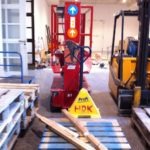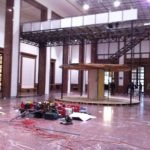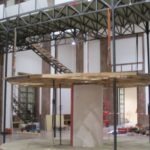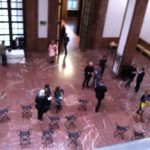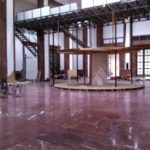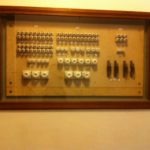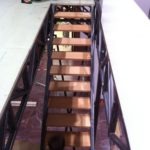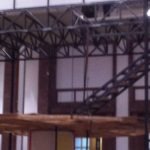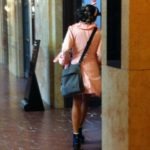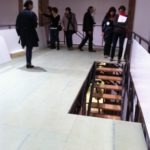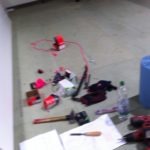
by Jean Marie Carey | 3 Jan 2014 | Art History, Franz Marc, German Expressionism / Modernism, Re-Enactments© and MashUps
One hundred years ago today, August Macke celebrated his 27th birthday – his last.
I spend a lot of research time excavating lost, unpublished, and little-known writings and facts about August Macke and his cousin (more like a little brother) Helmuth Macke. Franz Marc really loved the Mackes and his interactions with them are important for many reasons. But the Mackes are amazing on their own.

Famous Hyperbolic Color Chart
Like Franz Marc, August Macke was incredibly prolific across a number of mediums. As Marc notes from their first meeting, August is inescapably a benthic Capricorn, materialistic and practical. Yet his prose reads like verse, exploding with jokes (especially at the expense of Marc to whom he often “mit seinen im Ulk treiben”), imagery, sounds, and cheerful energy.
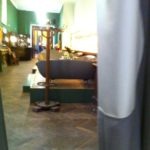
by Jean Marie Carey | 20 Oct 2013 | Art History, German Expressionism / Modernism
I cannot explain better what 18 of the 21 photographs above are better than the Haus der Kunst press release about this very subject, so here it is, partially ellipsed for brevity:
Manfred Pernice ... will create an expansive, accessible installation consisting of various, often "recycled" works. The artist is interested not only in the reusing of found objects and materials of various origins, but also, what is more remarkable, he uses his own earlier works as architectural elements for new works or as installation pieces in altered contexts of meaning. Pernice's planned intervention for Haus der Kunst's central Middle Hall relates directly to the space's architecture and consists of two main elements: Pernice will place his architectural sculpture "Tutti" from the year 2010 in the middle of the room. A spiral staircase leads up to the sculpture's roof. From there, via a second staircase, the visitor reaches a bridge, which spans the Middle Hall and from which visitors can continually view the room from new perspectives. For the bridge, the artist will develop an installation, which, as a result of the work process, will evolve on site. This form of spontaneous response to the spatial conditions is characteristic of Pernice's sculptural approach.
My friend who came with me to the opening exclaimed more succintly: “Mager! Ich mochte lieber sehen…”
Additionally, the director of HdK, Okwui Enwezor (who is having a cusp birthday this week), described Pernice’s work as an “intervention in the global crisis of modernity.”
The artist and sponsors (the Friends of Haus der Kunst) also spoke at length about the sculptural installation, which seems to suggest they realize that even for HdK regular patrons it requires some type of backgrounding. I give HdK a lot of credit for trying out global-art-fair-type works in its austere central hall and for the integration (too seamlessly really) into the “renovation.”
Having just been in six airports in six days, the kind of indistinguishable elevations, chutes, and stopping spaces of those reminded me of Tutti IV in sort of a vague “I’m tired” (not “I’m aware of phenomenology) way. I think maybe also for people living in München the trappings of renovation – with both the Lenbachhaus and the Pinakothek der Moderne having recently reopened – plus the endless “installations” of scaffolding and rerouting at the Hauptbahnhof and Marienplatz – are part of the normal whirring scenic backdrop of the city.

by Jean Marie Carey | 26 Jun 2013 | Animals in Art, Art History, Franz Marc, German Expressionism / Modernism

Video is a small but strong component of Joëlle Tuerlinckx’s exhibition at Haus der Kunst.
The legendary documentary Degenerate Art: The Nazis vs. Expressionism is available now (and probably not for long, so, Greasemonkey extension for Firefox, if you know what I mean) on youtube. Part of the mythical status of this program that originally aired in 1993 on the BBC is that it was never converted from VHS to DVD or digital download and has thus been difficult to locate and view.
As you might guess from the title this documentary by David Grubin is about the famous 1937 art exhibit held in Munich called Entartete Kunst, intended by the Nazis to show, collected, the most non-enobling effects of “degenerate art.” (Der Turm der blauen Pferde was part of this exhibit in Munich, and then removed when the show traveled to Berlin, beginning its period of being missing and presumed destroyed. I wonder sometimes if it would make Franz Marc scholars more happy or more sad if it is ever recovered…).
(more…)

by Jean Marie Carey | 25 Jul 2011 | Animals in Art, Art History, Franz Marc, German Expressionism / Modernism
“Dear Patron,
The item you requested: Von der Möglichkeit : das Phanomen der selbstschonferischen Möglichkeit in seinen kosmogonischen, mythisch-personifizierten und denkerisch-kunstlerischen Realisierungen als divergenztheologisches Problem

Dachfenster im Pinakothek der Moderne, München
is ready for you to checkout at the Tampa library’s Circulation Desk.”

by Jean Marie Carey | 3 Apr 2011 | Animals, Animals in Art, Art History

Postcard to August Macke, 29 December 1910:
“Greetings to all, please give my best to your brother, and I respectfully commend your mother.”



